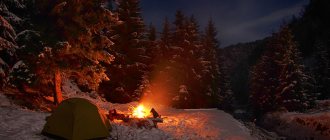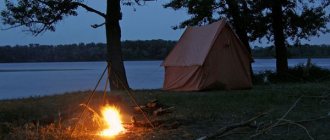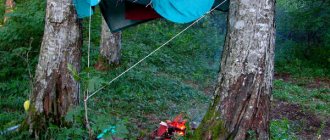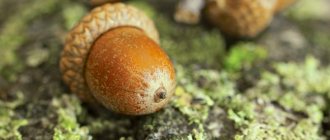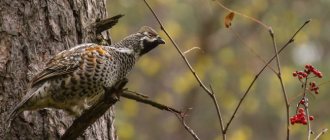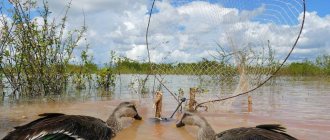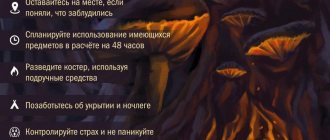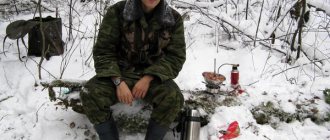What kind of food can be found in the forest
Usually, when a person finds himself in a difficult situation, he does not have special tools for hunting or fishing with him. What to do if you get lost in the forest in such a situation? There is always a knife! He will help you get food.
Animal food
- Let's start with animal food. The easiest prey option is earthworms. These are organisms rich in proteins. You should dig up a handful of worms and soak them in water for several hours. After this you can eat it. It is, of course, impossible to look at such food. It is best to boil it, the taste will be more pleasant. The same applies to caterpillars.
- The next dish is frogs. Remember that in French restaurants this is a delicacy. Catching these animals is not that difficult. To eat, you need to remove the skin and place the legs on sticks to fry. Ready frog meat tastes like chicken.
- Mice are more difficult to catch, but still possible. Gut, remove the skin and roast over the fire. Research by some scientists has shown that if you eat mice with all their insides, the body will receive all the nutrients and will not suffer from vitamin deficiency.
- You can also eat birds if you manage to catch them. Such meat is much more pleasant for humans. Bird eggs are also a very nutritious dish. You can drink it raw or boil it.
- Oddly enough, ant eggs are considered nutritious. They contain all the necessary nutrients. To get eggs, you need to remove the top of the anthill and throw on a white cloth. The ants will lay all their eggs under your fabric, protecting it from the sun.
- Grasshoppers, non-venomous snakes, lizards are all edible animals. But catching them is much more difficult.
Plant food
- People usually eat food with bread. Water lily leaves can replace it. They are rich in starch and taste like a bun.
- Many people think that you can only eat berries in the forest, but this is not true. There are many green plants that are eaten.
- For example, cattail or, in our opinion, reed. The edible part is the root. It can be sliced, boiled, fried or baked. The roasted root can be brewed. It tastes like a coffee drink.
- Icelandic lichen contains large amounts of starch and sugar. But it has an unpleasant bitterness. Before use, you need to soak it in water with ash.
- Burdock is used as a vegetable plant. In the forest, it will replace your carrots, potatoes, and parsley. The root and leaves can be added to soup. The rhizome is also eaten raw.
We recommend reading:
Sights of Venice
How to survive in the forest: Cooking techniques in the wild
Finding yourself in nature, separated from your usual everyday amenities, there is a risk of finding yourself completely helpless. The inability to light a fire, pitch a tent and distinguish a poisonous mushroom from a russula - these are the qualities that characterize the modern tourist. It is especially difficult for unadapted city dwellers at the moment when hunger overtakes them. This is where many people remember that the first season of the show “Survive at Any Cost” remained unwatched.
In this material we will talk about several methods of cooking in the field. We decided not to dwell on detailed recipes, since usually, in conditions of tourism shortages, everything that is at hand is used. Let’s focus on the technique and features of the cooking process.
WHAT TO BRING WITH YOU
Army bowler hat, utensils, S-hook, foil, wire, shovel, axe, knife
BONFIRE
A fire for cooking, like any other, is best lit at the bottom of a ravine or on the leeward side of a forest. The river bank is also suitable, plus - you don’t have to run far for water. It is best to dig a small hole in the ground 20–30 centimeters deep in advance, so that the wind will not easily interfere with the cooking process and it will be easier to bake in ash and coals.
In general, there are many types of fires, depending on the design, fuel and purposes it serves. We'll look at four that are ideal for cooking.
| Taiga fires are made of large logs laid lengthwise and secured with driven wooden pegs (so that the logs do not move apart). Due to the fact that a strong vertical draft arises between the logs, the heat from such a fire is very strong, and the fire front is wide. Such a fire is also convenient because it does not require the installation of spacers above it for hanging pots and buckets for cooking: if the logs are the same size, the dishes can be placed directly on them. | You don't need any special Boy Scout skills to make tea or fry small pieces of meat over a hut-type fire. Such a fire is relatively easy to light, however, it has a rather narrow heating zone and does not form many coals, while requiring constant supply of fuel. |
Fires in the shape of a star and a well take a long time to burn out (in the case of a star fire, you just need to periodically move the burnt wood towards the center) and produce very good and hot coals. On such a fire it is ideal to cook camp soups, roast pieces of meat and carcasses of killed birds on a spit.
To cook soup, an army pot is usually hung on a crossbar or a makeshift tripod over a fire. It would be a good idea to have a hook with you for hanging the pot - you can buy one at any tourist store or make it yourself from stiff wire. You can also place the cookware on a large, flat stone next to the fire so that the flame touches it.
For your information
Mushrooms found in the forest, simple camp cakes, and small pieces of meat can also be fried on a sapper shovel, greased with lard or a small amount of fat. This technique is unlikely to reveal additional flavor properties of food, but it will not leave you without hot food if the frying utensils accidentally fell over the side of the boat or were left at home due to an oversight.
TAIGA CANDLE
Another incredibly convenient and effective way to prepare hot food in nature is a wooden primus stove or, as it is also called, a taiga candle. To make it, you need to take a thick, dry log and cut it into a short (20–40 centimeters) cylinder. It is better not to choose resinous tree species for these purposes - they will produce too many sparks and “shoot” molten resin.
The log must be carefully split with an ax along the middle and the core must be cut out to form a small channel with a diameter of 5–7 centimeters. The output should be something like a thick wooden pipe. Now both halves need to be tightly fastened to each other, wrapped with wire or nailed, otherwise the candle will quickly burn out through the cracks. We fill the kerosene stove with paper or birch bark and install it in such a way that air enters it from the lower end. We set it on fire and get a full-fledged burner made of natural material.

This type of fireplace has several advantages over a fire. Firstly, you don’t need any additional devices to attach a frying pan or pot to it - the surface of the kerosene stove is already flat. Secondly, it does not take up much space and does not require constant fire support. At the same time, it is capable of burning and producing impressive heat for quite a long time. Thirdly, you can easily hold it in your hand and, if desired, cook food on the go, although this is unlikely to occur to anyone. Finally, having extinguished the candle as unnecessary, it can be reused over time.
GROUND OVEN
First of all, you need to dig a shallow hole in the ground about half a meter deep. Then the bottom of the pit is covered in layers with small stones, a layer of kindling and branches. Having filled the hole to the top with fuel, a dense layer of thicker and longer branches is laid on top, on which stones are again laid. On top of this pile another layer of stones and firewood is placed. The firewood that serves as a support will burn out and fall down along with the heated stones, from which the food will receive the main heat. When the coals finally burn out and give up all their heat to the stones, you can put food wrapped in several layers of foil into the pit - a bird carcass, fish, pieces of meat.

Now the food needs to be provided with the most comfortable conditions for baking - we lay long poles on top of the pit and cover them with cloth or wide leaves. We sprinkle the sarcophagus with earth and note the time. Cooking times, of course, depend on the type of food. An hour will be enough for vegetables, fish cut into small pieces and chicken - one and a half hours, and large game carcasses - three to four hours.
For your information
Wild migratory birds have no need to accumulate large amounts of fat in their bodies, and their meat, unlike domestic geese and chickens, is not as soft and juicy. Therefore, in the field, it would be best to cook a stew or some other soup from game. If you decide to bake the bird, its gutted carcass should be stuffed with something, for example wild apples, chopped pieces of lard, onions or wild berries.
COOKING IN CLAY
One of the most useful camp cooking skills is the ability to bake game in clay. This method is especially useful if you don’t even have basic cooking utensils. To be sure of the final result, first of all, you need to get suitable clay that can withstand the heat of a fire. The simplest test is to throw small balls rolled from it into the fire - if they do not crumble under the influence of temperature, then this clay can be trusted with a bird.

Before cooking, the bird must be gutted, removed from the wings and head, but not plucked, and thoroughly coated with clay with a layer of two centimeters under the feather. After which the clay “crypt” is sent to a pile of coals, sprinkled with ash on top. The readiness of the dish should be signaled by cracks appearing on the surface of the clay. Now the crust is broken and removed along with the feathers stuck to it, releasing the finished meat core.
Of course, the process of preparing this dish is not the easiest and requires some skill and experience - for the first time there is a high risk of turning the fruits of the hunt into a burnt lump. But it’s still worth mastering this method - if only for the rest of your life to brag to your friends that you tried wild pigeon in clay.
WATER
The water supplies you take with you are usually not enough for a long stay in nature, and hardly anyone associates five-liter buckets or coolers with water with a free tourist life. Sooner or later you will have to get water to make soup from the river. Its dull gray color alone will tell you that it would be a good idea to clean and disinfect such water. A mandatory cleaning step is filtering through cheesecloth and boiling for 15–20 minutes. Experienced tourists take with them, among other things, Pantocid and Aquatabs tablets - one tablet is enough to purify one liter of water. Iodine (two to five drops per liter) and potassium permanganate (one to two grams per liter) clean water quite well.
How to get food in the forest
In summer
In the summer, you can safely eat nettle, wood sorrel, and wood lice.
All these herbs appear in early spring and last until mid-autumn. And sorrel also has an antiseptic effect. Rhubarb is a perennial herb with a thick stem and rhizome. The leaves can be eaten raw or added to soup. You can also cook a bird, the only important thing is to know how to make a bird trap.
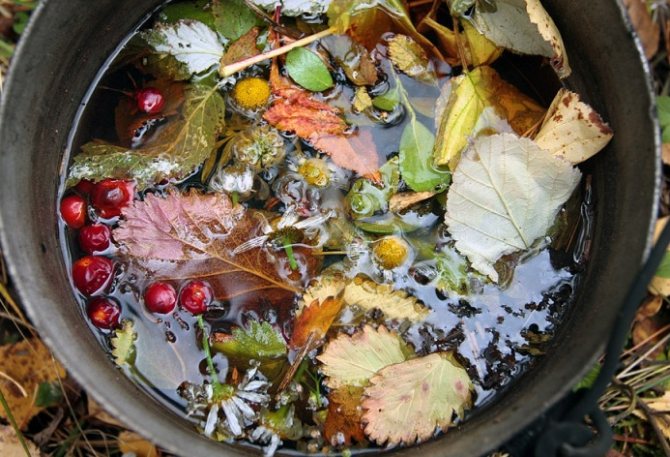
The next plant is hogweed. It tastes like cucumber. It is consumed raw, boiled or fried. But you need to be very careful with this herb. The fact is that hogweed juice can cause skin burns. But this happens when the sun's rays hit the skin. Therefore, carefully cut this plant and protect your eyes.
In addition, do not forget that not all forest inhabitants are friendly. While picking mushrooms, you can easily stumble upon a snake. It is important to know what to do if bitten by a snake, in order to provide medical assistance.
in autumn
Autumn is the time when you can easily find mushrooms and berries.
So, we all know that it is important to distinguish edible from inedible.
Edible mushrooms.
- The cap is spongy.
- Doesn't darken when broken.
- The colors are favorable, not flashy. Remember, plants that are too bright are usually poisonous. Coloring is their warning sign. Just remember the fly agaric.
It is better not to eat mushrooms raw; boil or fry them.
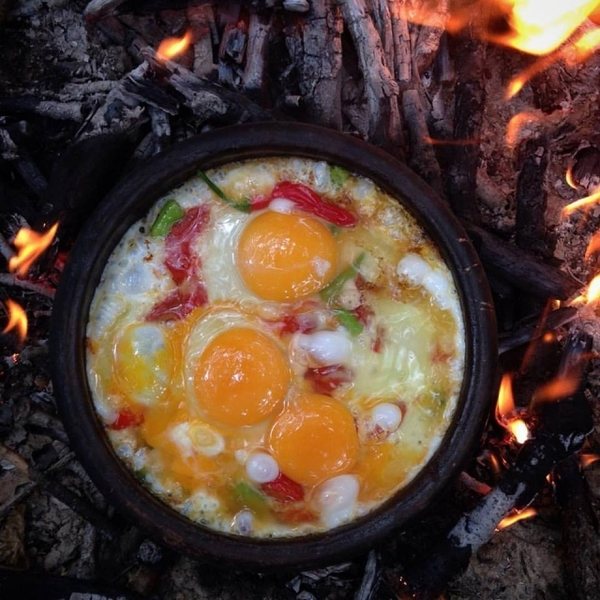
In autumn, in the forest you can find strawberries, currants, raspberries, lingonberries, cranberries, blueberries, blueberries, cloudberries, dogwoods, blackberries, and stone fruits.
As a rule, everyone knows what these berries look like. Eat only familiar fruits, otherwise it will lead to severe poisoning.
in winter
In winter, food is much more difficult to find, and the body, on the contrary, requires more calories.
First of all, pay attention to the berries that grow until the very cold - these are rose hips, hawthorn, rowan. If you see an oak tree, then you can find acorns under the snow. They need to be soaked and cooked. You can also find burdock or sorrel.
We recommend reading:
How to light a fire without matches
It is almost impossible to get game without special equipment. But if you’re lucky, you can watch for a hazel grouse and catch it at its roosting site.
The simplest options for food in winter are tree bark, buds, and the outer part of the trunk. Birch and pine are the most nutritious. Any mushroom picker or just a tourist should know how to collect birch sap. To do this, the top bark must be removed, but the young, green bark must be cut into strips and chewed. Buds, willow and oak twigs are all good for food.
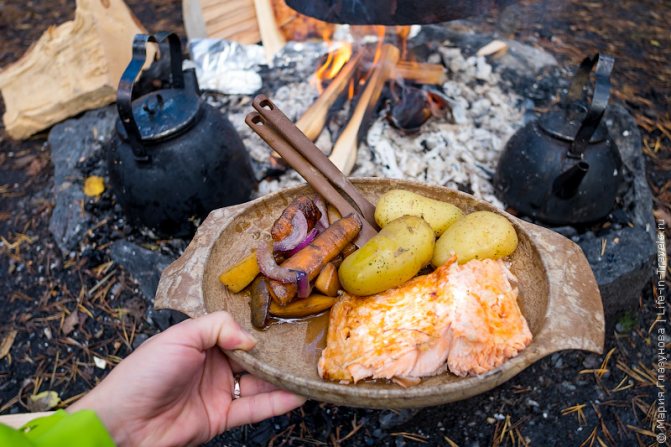
In winter you can also find mushrooms, especially since they will be noticeable simply due to the absence of other plants. Most often these are tree mushrooms or oyster mushrooms. Chaga has therapeutic properties. Winter honey fungus can be found on aspen; it usually grows in groups. You can also meet the false honey fungus; it is also suitable for food.
What can you eat in the forest if you get lost? Action Reminder
- If you realize that you are lost, stop and calmly examine everything you see around you. Listen to the sounds of the forest. The barking of dogs coming from a distance (heard at a distance of 2-3 km), the voices of people, the sounds of operating equipment, the railway (a running train can be heard at a distance of up to 10 km) can suggest the direction of movement.
- A tall tree can help, so you can climb it and look around the surroundings from above.
- If you have reached rescuers and are sure that they are looking for you, it is better to stay in one place and light a fire. The smoke will reveal your location.
- You can knock on wood with a stick from time to time; these sounds can be heard over long distances.
- If your cell phone is dead and you have to find your way on your own, try to navigate by the sun: to do this, you need to remember in which direction the nearest settlement is or where you came from. In the early morning the sun is in the east, moves to the south closer to noon, and drops to the west by 19 o'clock. If the night sky is cloudless, you can find the North Star, which will show the direction to the north. The polar star is not the brightest in the entire sky, but the most noticeable in the constellation Ursa Minor, which is shaped like a ladle. The North Star is located at the end of the handle of this bucket. At night, at the risk of getting injured in the dark, you should not move; you can only determine and remember the direction.
- A reminder if you get lost in the forest suggests that you need to leave evidence of your stay in a particular place: a handkerchief tied to a tree, chocolate packaging, notches in trees, an arrow made of stones, etc.
How to reheat and cook food
Of course, it is better to heat treat all food, especially animal food. This way, you will protect your body from various diseases.
Naturally, the easiest way to do this is over a fire. Here you need to consider what exactly you are preparing. If these are some kind of plants, then they should be thoroughly dried and lightly fried.
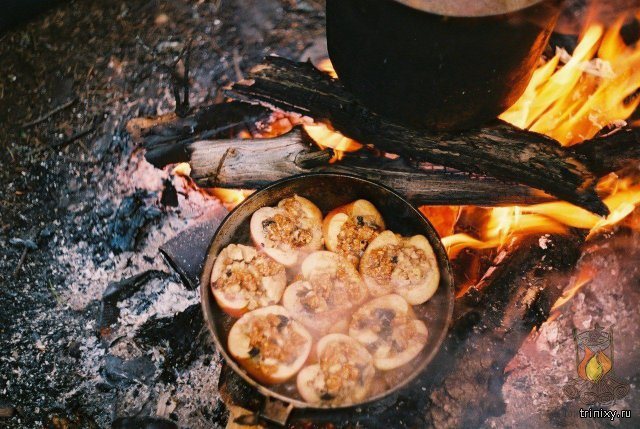
If we are talking about meat, for example, game, then the meat should be simmered over a fire for about an hour. It should first be processed, cleaned and prepared for frying.
If you want to fry insects, for example, grasshoppers, then you should not keep them on the fire for very long, as they will cook much faster than meat.
Author of the publication
offline 2 years
Nika
7
I am interested in hiking and traveling, photography and videography. I have been going hiking since childhood. The whole family went and went - sometimes to the sea, then to the river, to the lake, to the forest. There was a time when we spent a whole month in the forest. We lived in tents and cooked over fires. This is probably why I am still drawn to the forest and, in general, to nature. I travel regularly. About three trips a year for 10-15 days and many 2 and 3 day hikes.
Comments: 0Publications: 668Registration: 10/23/2018
Nika Survival in the wild, Nutrition in the wild, Articles
What do squirrels eat in the forest? Favorite treats of squirrels in the forest
The list of the animal’s most common food is small:
- coniferous tree seeds;
- young branches, bark, buds, tree leaves, needles;
- hazelnuts, acorns;
- mushrooms;
- berries and fruits;
- animal feed;
- tubers, rhizomes, as well as the ground part of herbaceous plants, lichens.
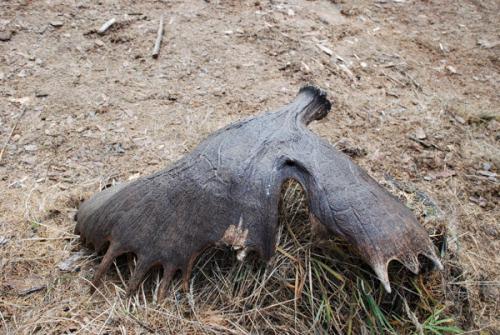
Shed horns of ungulates are an important source of calcium for squirrels
The share of the latter in the squirrel's diet is insignificant, but it increases significantly when other food crops fail. The main part of the diet consists of coniferous seeds, among them there are also more and less preferred ones. Pine nuts are the most delicious for animals, followed by spruce, larch, fir, and pine seeds. In case of crop failure, animals can migrate and migrate in search of food.
Animal feed is consumed mainly after winter, during the breeding season. Squirrels can also eat bird eggs, chicks, insects, frogs, and small mammals. They gnaw animal bones and shed horns of forest ungulates.
What is in the forest. What is a forest?
Before finding out what grows in the forest, it doesn’t hurt to define what a forest is in general.
Whatever the name of the forest is given by various scientific sources. And an ecosystem, and “a place where trees grow,” and a complex combination of various plants, and “the lungs of the planet.” Which name is the most accurate? All options together will give the most correct answer. Let's try to formulate a definition of a forest. A forest is a place where trees and grass grow, birds and animals, insects and microorganisms live. All of them together make up a complex ecological system, with food chains and cohabitation in the same territory. Well, this entire ecosystem, together with many others like it, really is the lungs of our planet. What is the function of the lungs? The answer is simple - breathe, enrich the human or animal body with oxygen. This is what forests do; they purify polluted air and release oxygen, which is very valuable and useful for you and me. Have you noticed how clean and fresh the air is in the forest? How pleasant and easy is it to breathe there? This is why walks in the forest are so useful in our time of industrial and chemical development.

